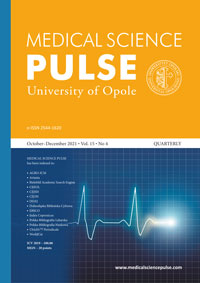Assessment of virtual healthcare: predictors of access and utilization before, during, and after the COVID-19 pandemic
Assessment of virtual healthcare: predictors of access and utilization before, during, and after the COVID-19 pandemic
Author(s): William E. Hills, Mark C. Murphy, Karen T. HillsSubject(s): Health and medicine and law
Published by: Uniwersytet Opolski
Keywords: tele-healthcare, tele-medicine; virtual care; tele-mental healthcare
Summary/Abstract: Background: Societal needs highlighted by the ongoing COVID-19 pandemic have resulted in rapid telehealth development and implementation. The broadening of guidelines for practice by regulatory bodies have allowed providers to employ video-capable devices in the virtual delivery of services to physical- and mentalhealth clients located across a broad range of settings. Aim of the study: This study examined use of synchronous, video-based, virtual healthcare before and during the COVID-19 pandemic. This included a comparison of: access for physical and mental health needs; differential assessment of service provision by professionals; consumer satisfaction; and, anticipated future use of virtual healthcare. Material and Methods: An online survey link was sent to three participant groups: college-aged students, adults, and retirement-aged persons. A total of 685 participants, varying in age, gender, ethnicity, and experience using tele-healthcare provided usable data for this study. Results: Half of participants (49.2%; n=337) used virtual healthcare; more people used it during the pandemic (87.2%; n=294) than before (26.4%; n=89). Physical services (86.8%; n=291; primarily physicians) were more common than mental health services (25.6%; n=86; primarily counselors). Access was most common through laptop computers (60.7%; n=204). Participants were satisfied with virtual healthcare experiences (Mdn=5). Almost all participants (94.2%; n=645) believed that virtual healthcare would continue after the pandemic, but only two-thirds (61.3%; n=420) reported they would use virtual healthcare if available in the future. Both previous experience with (p<0.001) and satisfaction with (p<0.001) virtual healthcare positively predicted anticipated future use. Conclusions: Tele-healthcare has experienced significant growth in the COVID-19 era. Emergency policy changes have resulted in services being developed and offered in the medical and mental health realms in conjunction with ongoing empirical evaluations of what does and does not work.
Journal: Medical Science Pulse
- Issue Year: 15/2021
- Issue No: 4
- Page Range: 3-11
- Page Count: 9
- Language: English

